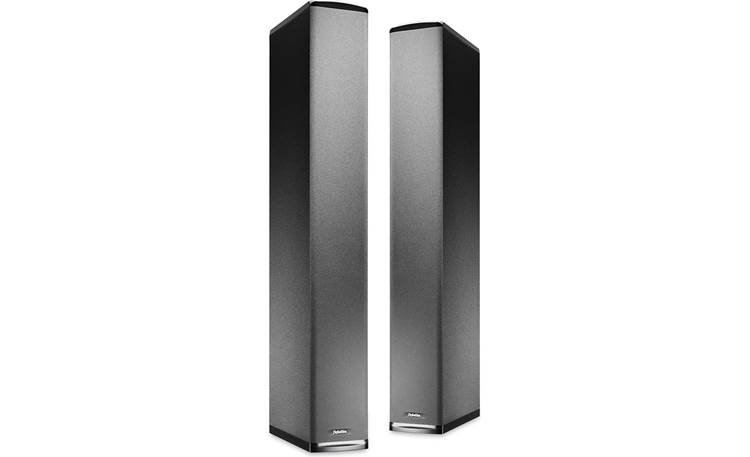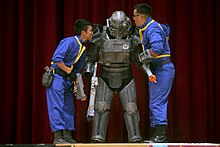Introduction
In the competitive world of e-commerce, engagement metrics are key indicators of success, especially in industries like fashion, where trends, visuals, and user experience (UX) play an outsized role. Whether you’re a large retail brand or a boutique selling unique, handmade items, understanding the differences between engaged and unengaged sessions on your website can be the difference between thriving and struggling in an oversaturated market.
What Is Engagement?
Engagement in e-commerce refers to the level of interaction a user has with your site. In the context of the fashion industry, engagement is more than just clicks—it’s about building a relationship between the user and your brand. Engaged sessions are those in which users show a genuine interest in your products, spend time browsing, interacting with your content, and often take steps toward purchasing. These users may add products to their cart, subscribe to newsletters, or view multiple product categories.
In contrast, unengaged sessions occur when users land on your site but fail to interact with the content in any meaningful way. These visitors might view a page and immediately leave (high bounce rate), or they might click through a few pages without taking any other action, leaving you with no conversion.
Understanding these user behaviors can help you optimize your website’s performance, improve conversion rates, and create a seamless shopping experience that encourages deeper interaction.
This article will explore engaged vs. unengaged sessions in-depth, providing insights into how these behaviors impact your fashion e-commerce site. We’ll discuss benchmarks, strategies to improve engagement, and actionable tips for turning unengaged sessions into loyal, repeat customers.
Table of Contents
- What Are Engaged vs. Unengaged Sessions?
- Why Engagement Matters in E-commerce Fashion
- The Key Metrics Behind Engagement
- Fashion Industry Benchmark for Engaged and Unengaged Sessions
- How to Measure Engagement for Fashion E-commerce Stores
- Strategies to Increase Engaged Sessions in Fashion E-commerce
- Common Causes of Unengaged Sessions
- How to Reduce Unengaged Sessions
- Case Studies: Fashion E-commerce Engagement Success Stories
- Conclusion
1. What Are Engaged vs. Unengaged Sessions?
At the core, the difference between engaged and unengaged sessions is about interaction and interest. Understanding this distinction will allow you to optimize your website’s design and marketing strategies.
Engaged Sessions:
An engaged session refers to a visit in which users spend a significant amount of time on the website and interact with its content. They might perform actions such as:
- Browsing multiple product pages
- Adding products to the cart
- Scrolling through product listings or categories
- Interacting with special offers or promotions
- Signing up for newsletters or creating accounts
- Completing a purchase
- Viewing videos or product reviews
Engaged sessions are indicative of strong interest. A user who spends more time on your site and interacts with your offerings is far more likely to convert, either by purchasing or returning for future visits.
Unengaged Sessions:
In contrast, unengaged sessions are those where users land on your website but quickly lose interest. They may show no meaningful interaction, leading to a high bounce rate or very low time spent on the site. Indicators of an unengaged session might include:
- One-page visits: The user lands on a page (such as the homepage or a specific product page) and leaves without clicking on anything else.
- Short time on site: A session duration of under 30 seconds could indicate that the user didn’t find anything appealing.
- No interaction with site features: For example, the user doesn’t engage with filters, search bars, or call-to-action buttons.
- Low page views: If a user views only a single product and leaves without exploring others, they are considered unengaged.
2. Why Engagement Matters in E-commerce Fashion
In the highly competitive fashion industry, engagement is much more than just a vanity metric. Engagement directly influences key performance indicators (KPIs) like conversion rate, customer loyalty, and lifetime value (LTV).
1. Higher Conversion Rates:
Engaged users are more likely to convert into customers. When users spend time on your site, browse multiple products, and interact with your content, they are signaling that they are interested in what you offer. This leads to a higher likelihood of them making a purchase.
A high engagement rate often means users find your product pages compelling, your images appealing, and your overall brand worth exploring. If engagement levels are low, it could mean that the user didn’t find what they expected or the user experience was lacking in some way.
2. Improved Customer Retention:
If your site engages users effectively, they are more likely to return for future visits. In the fashion industry, where trends evolve frequently, returning customers are a valuable asset. Email marketing campaigns, personalized product recommendations, and loyalty programs can further enhance engagement and keep customers coming back for more.
3. Stronger Brand Loyalty:
Engaged customers are more likely to feel emotionally connected to your brand. In fashion, consumers often buy based on their connection to a brand’s identity, not just the product. Brands that create strong, engaging experiences with their audience are more likely to foster long-term loyalty and generate repeat purchases.
4. Enhanced Word-of-Mouth Marketing:
When users are engaged with your site, they are more likely to share your content, recommend your products to friends, or even leave reviews. This organic traffic from word-of-mouth marketing is one of the most effective ways to increase sales and grow your customer base.
5. Lower Marketing Costs:
Engaged users are also more likely to respond positively to retargeting ads, email campaigns, and other forms of personalized marketing. This reduces the need for constant customer acquisition efforts, which can be expensive. Engaged visitors are also more likely to follow your brand on social media, further expanding your reach at a lower cost.
3. The Key Metrics Behind Engagement
Tracking the right metrics is essential to understanding the level of engagement on your website. Here are the most important key performance indicators (KPIs) for assessing engagement in e-commerce fashion:
1. Session Duration:
- Engaged: Users who spend more time on your site are more likely to be engaged. For a fashion site, sessions that last 2-5 minutes are generally considered engaged.
- Unengaged: Sessions under 30 seconds or 1 minute may signal a lack of interest or a poor website experience.
2. Pages per Session:
- Engaged: If users visit 4 or more pages per session, it’s a sign they’re exploring different categories, checking out various products, or engaging with promotional content.
- Unengaged: A low number of pages per session (usually less than 1.5 pages) often means users didn’t find what they were looking for or left early.
3. Bounce Rate:
- Engaged: A low bounce rate (under 50%) means visitors are staying on your site and interacting with multiple pages.
- Unengaged: A high bounce rate (above 60%) is an indicator of disengagement. It could suggest that the content or experience isn’t compelling enough.
4. Click-Through Rate (CTR):
- Engaged: A high CTR on product listings, ads, and promotions means users are actively interacting with your content.
- Unengaged: Low CTR indicates that your site’s content is not resonating with visitors. They may not find your calls-to-action compelling.
5. Add to Cart and Checkout Actions:
- Engaged: Adding products to the cart or starting the checkout process shows strong purchase intent. These are prime indicators of engagement.
- Unengaged: If visitors browse without adding products to their cart or initiating checkout, it often means they aren’t engaged with the products or the shopping experience.
6. Conversion Rate:
- Engaged: Higher conversion rates are a direct reflection of strong engagement. Engaged users often complete purchases or sign up for loyalty programs.
- Unengaged: Low conversion rates are often associated with high bounce rates or ineffective marketing and website strategies.
4. Fashion Industry Benchmark for Engaged and Unengaged Sessions
Benchmarking is an essential part of understanding how your e-commerce site compares to industry standards. These numbers can help you identify whether your engagement rates are on par with other fashion websites and where improvements are needed.
Engaged Session Benchmarks:
- Session Duration: 3–5 minutes (indicates strong interest and browsing behavior).
- Pages per Session: 4–6 pages (reflecting user exploration).
- Bounce Rate: 40–50% (lower bounce rates suggest better engagement).
- Conversion Rate: 2-4% for fashion e-commerce sites (top performers may exceed this).
Unengaged Session Benchmarks:
- Session Duration: Less than 30 seconds (high likelihood of disengagement).
- Pages per Session: Under 1.5 pages (suggesting shallow interaction).
- Bounce Rate: Above 60% (high bounce rates often signal a mismatch between user intent and website content).
- Conversion Rate: Below 1% (indicating that visitors aren’t converting into buyers).
For more detailed industry benchmarks, you can use resources like Statista, Google Analytics Benchmarks, or specialized reports in the fashion e-commerce space to see how your performance stacks up against competitors.
5. How to Measure Engagement for Fashion E-commerce Stores
The key to improving engagement is measurement. Here are several tools and methods you can use to assess how engaged users are with your fashion e-commerce store:
1. Google Analytics:
Google Analytics is a powerful tool that can track session duration, bounce rate, pages per session, and other key metrics. You can also segment users by behavior (e.g., new vs. returning customers) to get a deeper understanding of engagement trends.
2. Heatmaps and Session Recordings:
Tools like Hotjar, Crazy Egg, and Lucky Orange allow you to see where users are clicking, scrolling, and spending the most time. This can help you identify which parts of your site are engaging and which need improvement.
3. A/B Testing:
Running A/B tests on various elements of your site (e.g., homepage layouts, product pages, call-to-action buttons) can help you understand what drives engagement. Use Google Optimize or Optimizely to test different versions of your pages and measure which performs better.
4. Surveys and Feedback Forms:
Direct feedback from your customers can provide valuable insights into why they are engaging (or not engaging) with your site. Use tools like SurveyMonkey or Typeform to collect user opinions on their browsing experience, product preferences, and overall satisfaction.
6. Strategies to Increase Engaged Sessions in Fashion E-commerce
Once you’ve established a baseline for your engagement metrics, it’s time to implement strategies to improve them. Here are some effective tactics:
1. Improve Site Speed and Mobile Optimization:
Page load speed is one of the most important factors in keeping users engaged. Research shows that even a 1-second delay in page load time can result in a significant drop in conversions. Optimize images, use a content delivery network (CDN), and minimize JavaScript to improve speed. Additionally, ensure your site is fully responsive, so users have a smooth experience on mobile devices.
2. High-Quality Visual Content:
Fashion is a highly visual industry. Professional product photography, 360-degree views, and videos of your clothing and accessories can create a more immersive experience, increasing user engagement. Make sure your product pages load fast but still showcase your products in their best light.
3. Personalized Recommendations:
Leverage AI-powered personalization engines to suggest products based on users’ browsing behavior, purchase history, and preferences. Personalized experiences increase the likelihood that users will continue browsing and eventually make a purchase.
4. Clear and Easy Navigation:
Ensure your website is easy to navigate with intuitive menus, a search bar, and product filters. The easier it is for users to find what they’re looking for, the more likely they are to engage with your site.
5. Offer Interactive Features:
Add features that allow users to interact with your products, such as virtual try-ons, size guides, and customer reviews. Features like these not only improve engagement but also enhance the shopping experience.
6. Leverage Social Proof:
Fashion buyers often rely on the opinions of others. Integrate customer reviews, ratings, and user-generated content into your product pages to build trust and encourage more engagement. Social proof signals to potential buyers that others value your brand.
7. Create Urgency with Limited-Time Offers:
Offering limited-time promotions or countdown timers on popular items can spur action and encourage users to engage more with your site. Be sure to highlight these offers on your homepage and product pages.
7. Common Causes of Unengaged Sessions
Understanding why visitors become disengaged is just as important as knowing how to drive engagement. Some common reasons why users might leave your site include:
1. Poor Website Design:
A cluttered or confusing design can overwhelm users, especially if your site has difficult navigation or a poor layout. Make sure your website has a clean, intuitive design with clear CTAs (calls to action).
2. Slow Load Times:
A website that takes too long to load can frustrate users, especially in the fashion industry, where imagery is key. Optimize image sizes and streamline your code to enhance speed.
3. Irrelevant Content:
If users land on your site and find that your product offerings don’t match their needs or preferences, they’re likely to leave quickly. Ensure your marketing and website content aligns with user expectations.
4. Too Many Pop-Ups or Ads:
Excessive ads or pop-ups can be intrusive and drive visitors away. While promotions and pop-ups can be effective, make sure they don’t disrupt the browsing experience.
Conclusion
In the world of e-commerce fashion, understanding the difference between engaged and unengaged sessions is crucial for building a website that attracts, retains, and converts visitors. By focusing on key metrics such as session duration, pages per session, and conversion rates, and implementing strategies to boost engagement, you can create a more effective online shopping experience for your users.
By leveraging insights into the behavior of your visitors, tracking engagement benchmarks, and adopting best practices from successful fashion brands, you can optimize your e-commerce site and increase both customer loyalty and sales. Keep iterating, testing, and improving, and your site will go from merely attracting traffic to truly engaging customers.for more posts also read this website














Leave a Reply